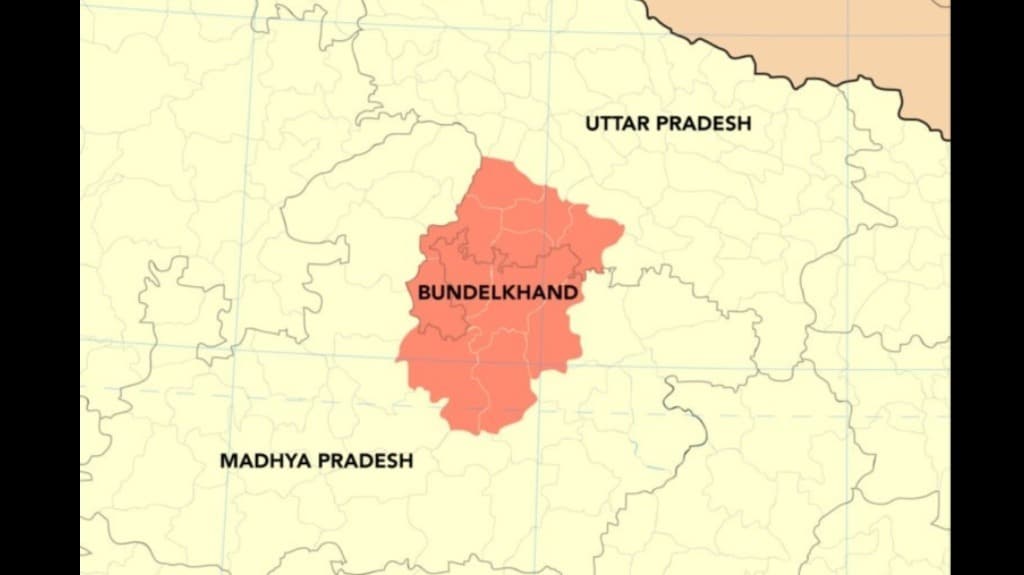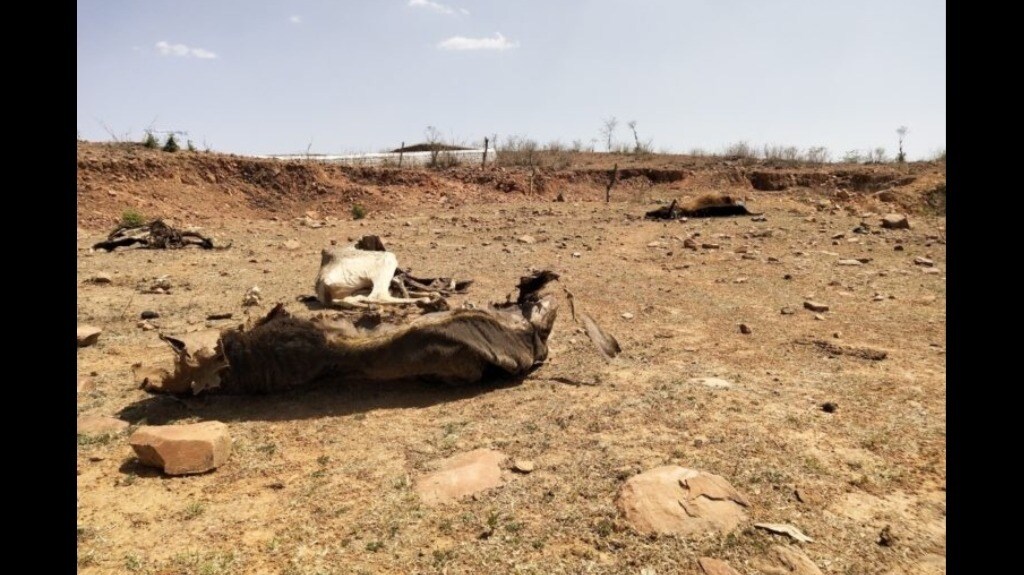By Kanchan Srivastava It is just the beginning of summer. The mercury in Lalitpur — one of the drought-prone districts of Bundelkhand, a region divided between the two states of Uttar Pradesh and Madhya Pradesh in India — is already touching 42 degrees Celsius. Water has evaporated from ponds and tube wells in most areas of the southern part of Jhansi, the largest city in Bundelkhand. Rampyari, a resident of Rajpur village in Talbehat tehsil of Lalitpur, Uttar Pradesh, which is around 600 kilometres from Delhi, makes five to six rounds daily to the only hand pump in her village to fetch water. The hand pump is about a kilometre from her home and her rounds start at 4 am. “Water is the most precious item here. This is the first thing which comes into our minds as we go to sleep and when we wake up,” an exhausted Rampyari told Mongabay-India as she filled her vessels under the scorching sun after harvesting the wheat in her farm. Ganeshi, who lives in Gulenda, a village close by, echoed her sentiments. “This water crisis has made our lives miserable,” she said. The same story plays out in Ratanpur and Rasina villages of Babina Tehsil of Jhansi district in Uttar Pradesh during summer, when most hand pumps, wells and ponds go dry. Like in most parts of rural India, it is mainly a woman’s job to fetch water in the Bundelkhand region, which is spread across 70,800 square kilometres and comprises 13 districts — seven in Uttar Pradesh (Jhansi, Jalaun, Lalitpur, Hamirpur, Mahoba, Banda and Chitrakut) and six in Madhya Pradesh (Datia, Tikamgarh, Chhattarpur, Damoh, Sagar and Panna). [lq][caption id=“attachment_6525761” align=“alignnone” width=“1024”]
 In most Bundelkhand villages, women fetch water four to five times a day from hand pumps installed at least 1-2 km away from their homes[/caption][/lq] Men, mainly small farmers, struggle to arrange for water for agriculture as irrigation facilities are unavailable in most parts of the rocky terrain. They sow just one crop (wheat) and then end up working as unskilled labourers in cities to make ends meet. Pushpa Rai, a resident of Mastapur, Jatara Tehsil of Tikamgarh (Madhya Pradesh) who fetches water from a hand pump two kilometres away from her home, says, “Parties don’t talk about our plight when they campaign. We are simply reduced to numbers in the vote count.” Not an election priority Bundelkhand has traditionally been a bastion of the Samajwadi Party and Bahujan Samaj Party, but in the 2014 Lok Sabha elections, the Bharatiya Janata Party swept the elections winning all eight parliamentary seats across two states with the promise of development. Uma Bharti, the former chief minister of Madhya Pradesh, who won Uttar Pradesh’s Jhansi seat in 2014 and became senior minister in the Union government had also promised separate statehood for the region. Five years down the line, neither water crisis has been improved in the region nor it got statehood leading to huge anti-incumbency, say locals and activists. The general elections were around the corner when Mongabay-India travelled through the area in early April, but there was no sign of any political activity in rural areas. Most households in Rajpur and other dry villages of Lalitpur are under lock and key. Some have only kids or the elderly left. With no guardians around, the education and health of children get compromised and the vicious cycle of poverty goes on. According to 60-year-old Virendra Saharia of Gulenda in Talbehat, Lalitpur, there is no employment in the village. “Even jobs under the Mahatma Gandhi National Rural Employment Guarantee Act (MNREGA), which promises at least 100 days of unskilled work to every rural Indian, are not there. My wife, son and daughter-in-law stay and work in Indore city to earn money.” The situation is worse for cattle. Mongabay-India was witness to three cows breathing their last in Rajpur. Cattle carcasses were spotted all over Mastapur in Tikamgarh. [rq][caption id=“attachment_6525771” align=“alignnone” width=“1024”]
 The situation is worse for cattle. We witnessed three cows breathing their last in Rajpur.[/caption][/rq] It is a man-made drought, say experts Interestingly,
Tikamgarh received 51 percent more than the average rainfall last year while Jhansi and Lalitpur had a little below than the average – eight and 11 percent less respectively. “Most reservoirs and dams were overflowing. The situation in some areas even demanded helicopters rescue operations,” says Kumudlata Srivastava, commissioner of Jhansi division, which includes Jhansi, Jalaun and Lalitpur districts. Clearly, conservation measures and rain harvesting in the region are inadequate. A
study by the National Institute of Disaster Management found that droughts in Bundelkhand are not just a result of climatic conditions; they are also man-made. According to the study, “usually, the meteorological drought — rainfall much below average — leads to agricultural drought in the same year. If the meteorological drought continues for the second consecutive year, then the hydrological drought — below average water availability — occurs. But in Bundelkhand, this pattern was broken many times suggesting lapses in water conservation.” Sanjay Singh, the founder of
Parmarth, an organisation working on rainwater harvesting projects in nearly 500 villages across Bundelkhand, says, “Most rivers, wells and ponds have dried up due to poor water management. Groundwater has depleted over the years due to a lack of effort by the administration to take up water recharging.” [imgcenter]
In most Bundelkhand villages, women fetch water four to five times a day from hand pumps installed at least one to two kilometres away from their homes. Voters say politicians meanwhile prefer to play the caste card to come to power.
Advertisement
End of Article


)
)
)
)
)
)
)
)
)



